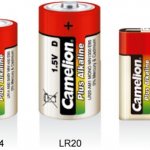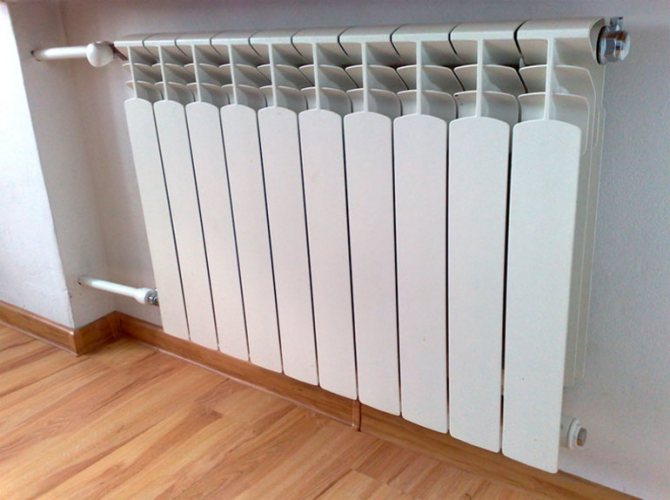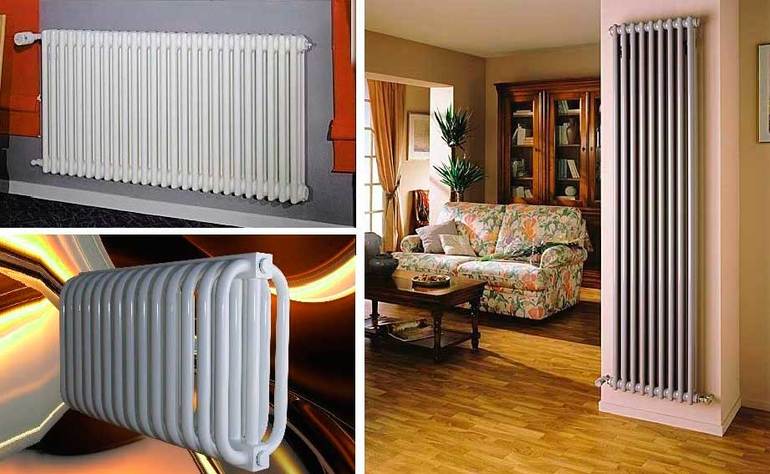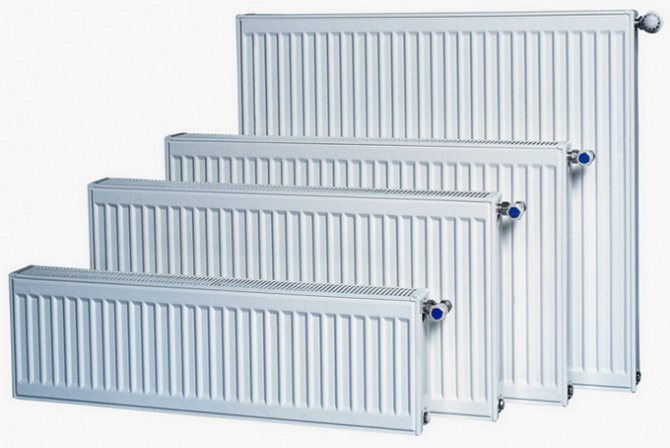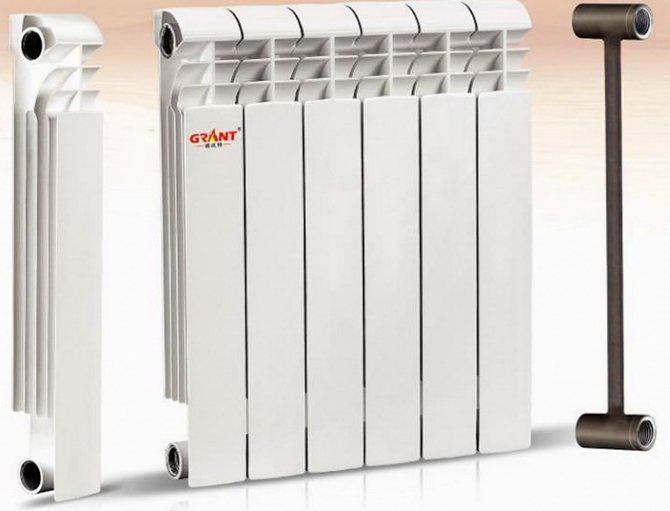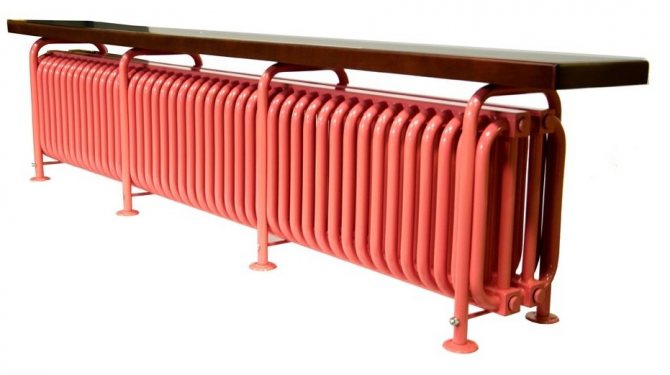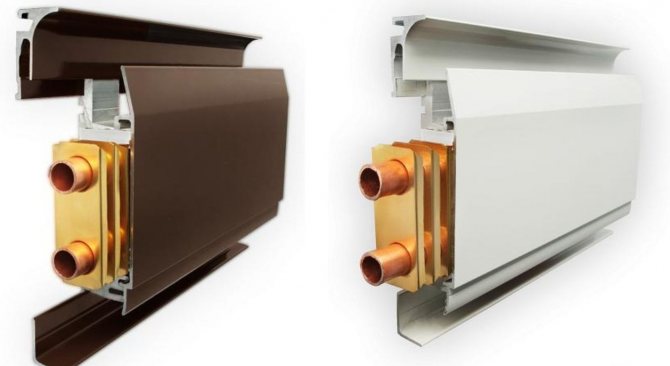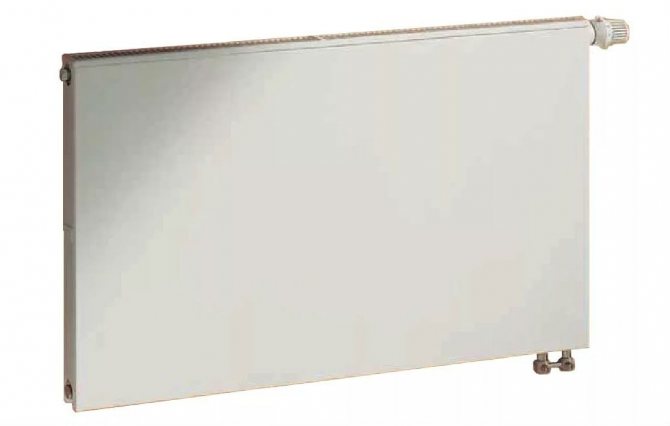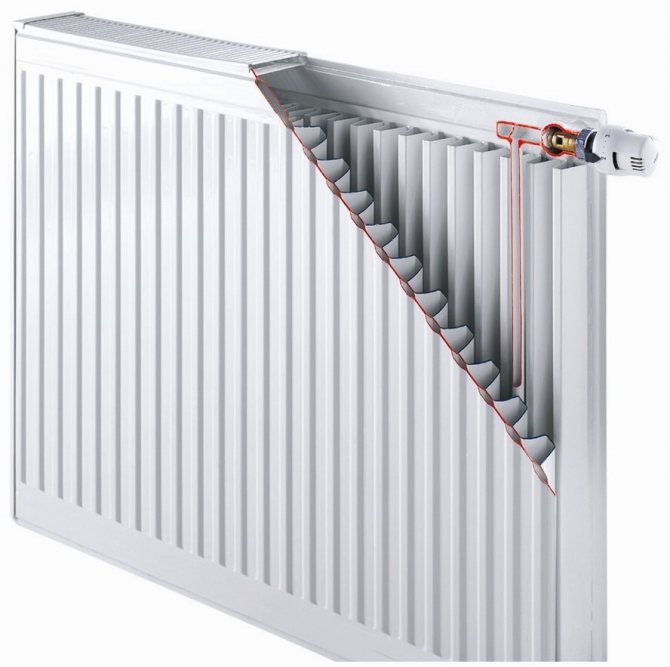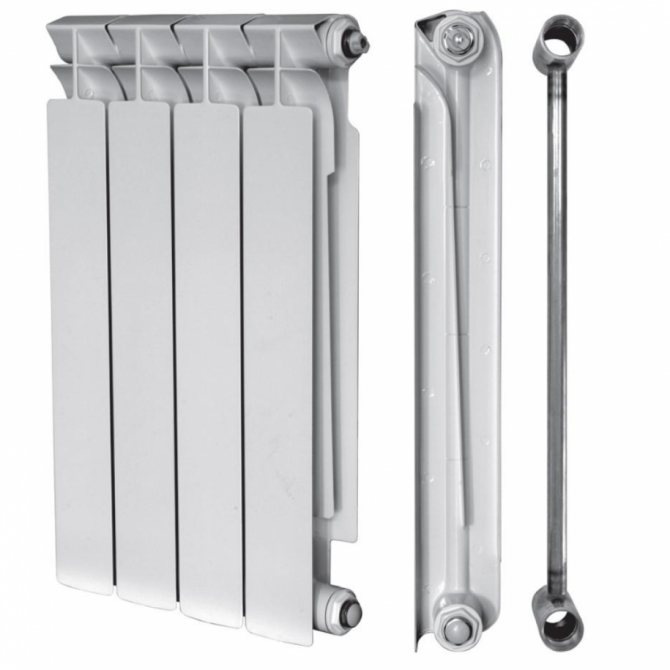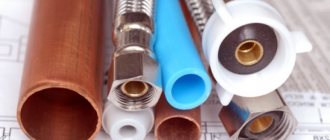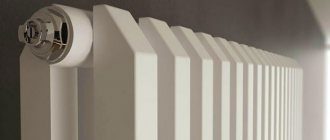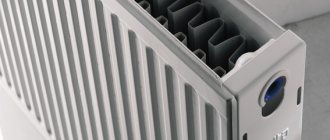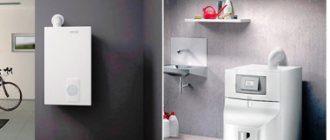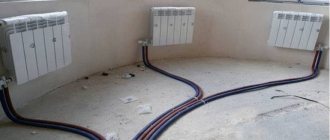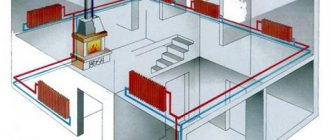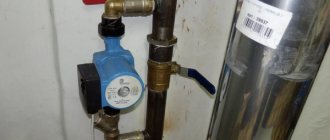The heating system is a complex interconnected complex of many devices: a heat supply source, radiators, pipes, pumps and other components, which together provide effective heating of the house. Heating batteries for a private house are considered the most important elements of the system, since they transfer heat from hot water to the internal air of the room. Without them, no heat supply scheme can exist: central, autonomous or individual. Therefore, the buyer, when choosing a heating device, first of all wants it to work reliably over a long period. Today, a huge number of models with different technical characteristics, design and price are presented in the trading network, so that an unprepared buyer can get confused. In order to make a conscious choice, you will need to understand which device will be preferable for a particular object.
Types of batteries and their characteristics
In everyday life, in addition to ordinary batteries, you can also find rechargeable types identical to the first. Yes, they will last longer, but such items are also more expensive. In this article, we will not dwell on them, but consider the usual types of batteries.
Battery classification
Energy sources can be sorted according to several criteria:
- Chemical composition.
- Standard size
By chemical composition
Below, you will be presented with batteries by type of electrolyte. The most famous are the first two types.
Saline
The electrolyte of such a battery is based on ammonium or zinc chloride. A negative lead that occupies a large area of the cylindrical element is created from Zn. Such elements have a carbon rod, which is treated with a special compound.
Sometimes you can find that the electrodes of such batteries are made of manganese oxide. These elements have the lowest cost among all the others. Used in Chinese alarm clocks, TV remotes, computer mice and other small appliances. Ideal for devices with low current consumption.
Key Features:
- Cannot be charged.
- They may not work in the cold.
- They sit down quickly.
- It may leak if used for a long time.
- Are cheap!
- Stored for 2 years.
They are also popularly referred to as carbon-zinc and zinc-carbon.
Read more about salt batteries here!
Alkaline or Alkaline
These Alkaline batteries use potassium hydroxide as the electrolyte. The electrodes are made from the same material as the previous type. That is, from manganese dioxide and powdered zinc. Often, such batteries can be found in tablets, phones, cameras, toys, remotes and other devices.
For the first time, these galvanic batteries were produced by Durasel in 1964. Potassium hydroxide is used as an electrolyte.
Features:
- More powerful than saline.
- They are not very susceptible to self-discharge.
- Sealed.
- They cost a little more than the previous ones.
- Large mass.
- They can be stored for up to 5-10 years.
- Operate in subzero temperatures down to -20 C0
Some of the alkaline batteries can be recharged, but they will cost many times more.
You can read more about this type of battery here!
Injection molding
This is a new type of battery that has appeared recently. They are considered the best compared to those described above. These batteries should be taken for devices with high energy consumption, for example, cameras, flashlights, toys.
The anode of such batteries is made of manganese dioxide, and the cathode is made of lithium. The electrolyte is organic.
Features:
- Increased capacity.
- Not high self-discharge.
- Shelf life is 10-12 years.
- They work at temperatures from -40 degrees.
- High price.
From cast energy sources, several subspecies can be distinguished.
Iodine-lithium
They use iodine as an oxidizing agent. Lithium in them is a reducing agent. As a result of these features, they are able to store a charge for a long time. They discharge slowly and are powerful enough. Therefore, it was decided to use them in pacemakers.
Castable solid cathode batteries
Here the cathode is made of lithium, and the anode is made of sulfides and metal oxides. Salt solutions serve here as an electrolyte. The voltage is at 1.5 volts.
They are able to function perfectly in different temperature ranges. They have a high capacity and are very expensive compared to all others.
With liquid oxidants
Sulfur dioxide is used, which is immersed in a thick liquid of thionyl chloride. Lithium bromide is the electrolyte here. Carbons are cathodes. They are smeared onto a plate made of aluminum, stainless steel or nickel.
If the device is using a lot of power, the battery will drain quickly. This is the main disadvantage of this power supply. It can function at temperatures from -60 degrees. Its negative feature also includes the price, explosiveness. Sometimes elements of this type with increased toxicity can be found. Used in the space or military industry.
Read more about lithium batteries here!
Silver batteries
One of the most expensive energy sources. But on the other hand, their capacity is about 50% higher than that of injection molding and therefore they will work longer. They do an excellent job in adverse weather conditions.
Their cathode is made of silver oxide and the anode is made of zinc. An alkali metal hydroxide is used as an electrolyte. They have an overall capacity and voltage up to 1.55 volts. You can store such batteries for up to 10 years, since their self-discharge is very low. Can be used at temperatures up to -30 degrees. Many people gave them the name silver-zinc.
They are very often used in watches, photographic equipment and medical equipment.
Zinc air
They are highly sensitive to weather conditions. Best used indoors. In other conditions, the air can change humidity and the batteries will stop working. The main positive feature is the large amount of energy. This is due to the fact that the cathode in this battery is not consumable. Calcium hydroxide is used as an electrolyte.
Such elements on the market can be found in two variations:
- Push-button, tablet, flat or disc-shaped. They have a small capacity. Used frequently.
- Prismatic. They have an increased capacity up to 1000 mAh.
They are environmentally friendly and are very often used in medicine. True, they do not work as long as we would like. They can work for a maximum of 1 month after opening the package. They can work at temperatures from -25 to +35 C0. Voltage 1.2-1.4 volts.
If you have already opened the package and activated these batteries, then you will have to glue everything tightly to seal it. So the self-discharge will decrease. Under such conditions, they can persist for up to several years.
Mercury
These are some of the most poisonous batteries in existence at the moment. Because of their toxicity, they have not become popular. These power supplies can be recharged multiple times. They quickly lose their capacity due to the flow of liquid metal into one area.
They are able to work for a long time in bad climatic conditions.
Read more about this type of battery in this article!
These are the types of batteries in terms of composition.
Heating features
The peculiarity of heating in a private house is that it is not central, that is, connected to a common boiler room, but autonomous. Accordingly, there are a number of features:
- Due to the fact that radiators are in a private house, the pressure on the coolants is much less. Therefore, there can be no pipe break, which residents of apartment buildings are so afraid of. Thus, you can choose models with thin walls.
- Although a pipe break is extremely rare in a private home, there is another problem - water freezing. If the radiator is not drained before leaving home, the battery may burst.
- Due to the fact that the distance from the heat source to the coolant is small, the latter heats up very much. Therefore, select radiators that can withstand high temperatures.
- To avoid freezing the liquid inside the pipes, it is recommended to add alcohol or antifreeze to it.
- The main rule that is followed when choosing a heater is the area of the room. If this is a cottage, then choose radiators with high power so that several devices can warm the room well.
Battery classification by size
As you know, many batteries have different shapes. That is why the marking of the batteries was specially developed according to their type. There are European and American classifications.
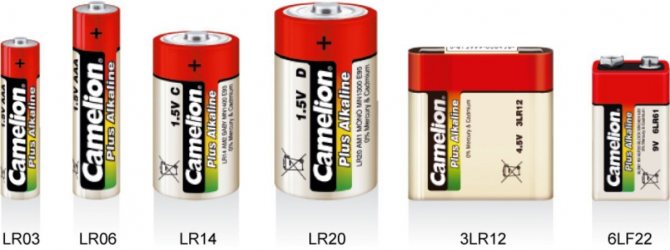
Below is a table that displays energy sources by standard size. It will help you determine the type of battery.
| American marking | People's markings | Coded designations | Type | Width in mm | Height in mm | Capacity in mAh. |
| BUT | not | LR23R23 | Alkaline Salt | 17 | 50 | Not known |
| AA | Finger | FR6LR6R6 | Lithium Alkaline Salt | 14.5 | 50.5 | 1100 – 3500 |
| AAA | Little finger | LR03FR03R03 | Alkaline Lithium Salt | 10.5 | 44.5 | 540 – 1300 |
| AAAA | Little pinky | LR8D425 | Alkaline | 8.3 | 42.5 | 625 |
| IN | LR12 | Alkaline | 21.5 | 60 | 8350 | |
| FROM | Average | 26.2 | 50 | 3800 – 8000 | ||
| D | Large, round | LR14 R14 | Alkaline Salt | 34.2 | 61.5 | 8000 – 19500 |
| F | LR20R20 | Alkaline Salt | 33 | 91 | unknown | |
| N | LR1R1 | Alkaline Salt | 12 | 30.2 | 1000 | |
| ½ AA | R14250 | Salt | 14.5 | 25 | ||
| R10 | 21.5 | 37.3 | 1800 | |||
| PP 3 | Crown | 1604, 6F22, 6R611604A, 6LF22, 6LR61, MN1604, MX1604 | Salt Alkaline | 26.5 | 48.5 | 150 – 1000 |
| A 23 | Mini pinky | ANSI-1181A, 8LR23, 8LR932, GP23A, E23A, LRV08, MN21, V23GA | 10.5 | 28.9 | 40 |
You can see the American mark on the battery label. They also indicate what it consists of, and also put down the date. The L value on the battery indicates that it is alkaline. Sizes may vary slightly from those shown. For example, if the battery is in a dense label, then its dimensions will be 1-3 mm larger. The manufacturer puts such a shell to protect the energy source from weather conditions and impacts in case of a fall.
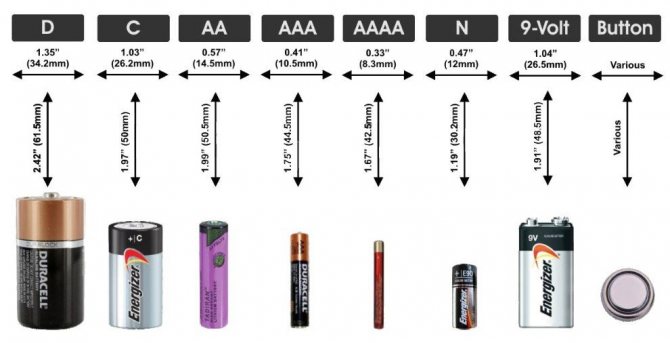

IEC standard designations
| Designation | Energy source type |
| PR | Zinc air |
| R | Saline |
| CR | Lithium |
| SR | Silver |
| LR | Alkaline |
Thus, the types of electrochemical cells can be different.
Tablet types of batteries
These types of power supplies can be called flat, flattened, disk, buttons, etc. They are different in chemical composition. In fact, there are a lot of them and on our site you can find more than 80% of all their types. Below are their most basic representatives.
- Zinc air PR elements of sizes 5, 10, 13, 312, 630 and 675 for 1.2 V.
- Lithium CR batteries with standard sizes from 927 to 3032 (where the first one or two digits are the diameter in millimeters, and the last two digits are the thickness, in tenths, fractions of a millimeter) by 3 V.
- Disc-shaped SR batteries in sizes 41 to 932 with silver oxide for 1.55 V watches.
- LR tablets size 43, 54, 44, 1.5 volt. Used in calculators, watches and other devices.
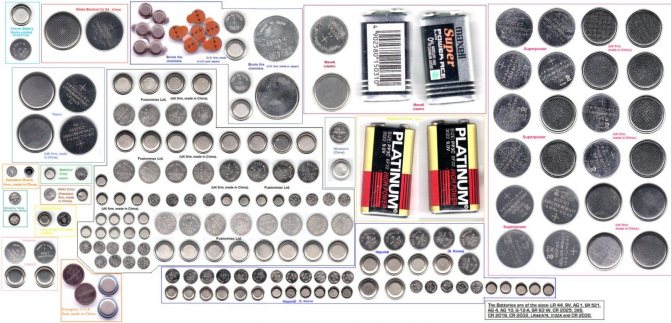

Battery selection: final notes
Lithium batteries
- can provide up to 5000 charging cycles
- Longest service life at 80% discharge
- Can be charged in 1-2 hours
- They can work at subzero temperatures, but you need to charge at positive temperatures
- Cannot be charged with low currents
- Requires maintenance, alignment and a dedicated charge and discharge control system
- Self-discharge at about 10% per month
- Can be stored in a cool place when charged at least 40% of full
- Low toxicity, but preferably disposed of at end of life
Nickel metal hydride batteries
- Can provide up to 3000 charging cycles
- The charge takes 2-4 hours
- Can work at subzero temperatures
- Cannot be charged with small currents, low resistance to overcharge
- Can handle high currents up to 200W (for the largest NiMh batteries)
- Requires periodic maintenance and alignment (every 3 months)
- Self-discharge at about 30% per month
- Can be stored in a cool place when charged at least 40% of full
- Low toxicity, but preferably disposed of at end of life
Sealed Lead Acid Batteries
- Can provide up to 3000 charging cycles
- Charges in 8-16 hours
- Can work at subzero temperatures
- Can be charged with low currents
- Maintenance-free, but it is advisable to monitor the level of charge and periodically carry out training cycles
- Can provide high discharge currents at high powers
- It is advisable not to discharge more than 50%
- Self-discharge - about 3% per month
- Store at room temperature and fully charged
- Contains toxic materials and must be disposed of at the end of their service life
Details about the types and applications of lead-acid batteries in the article Types of lead-acid batteries
This article has been read 15033 times!
A brief description of popular types of batteries
The most popular today are batteries made in the form of a cylinder. So, now we will make a short overview on them.
AA.
Very popular. Has a voltage of 1.5. Dimensions 14.5x50.5 mm. Alkaline ones are labeled as LR6, and zinc-carbon ones are labeled as R6 and FR6 lithium. The people gave them the name finger because they are roughly similar to fingers.
AAA.
They have a size of 10.5x44.5 mm. Voltage 1.5 volts. Alkaline types are designated as LR03 and other types as R03, FR03, etc. The people christened them mezinchikov because of the similarity in terms of size with the little finger.
FROM.
Marked as R14 and LR14. Voltage 1.5 volts. May be alkaline and saline. There are people who call them "Average". Dimensions 26.2x50 mm. They are almost as long as fingerlings.
D.
Referred to as LR20, they are alkaline. Saline are designated as R20. Parameters 34.2x61.5 mm. Capacity 8000 - 12000 mAh. Many are called round kegs, casks, or simply large. The production was started in 1898. And they consider the first 1.5 volt batteries. Then they were released for flashlights. Well, now they are used in radios, tape recorders, clocks, etc.
PP3.
They are saline and labeled as 6F22 and alkaline with the designation 6LR61. You can also find injection molding elements of this format. They are referred to as 6KR61. Another familiar name is "Krona".
Dimensions 48.5x26.5x17.5 mm. The capacity for alkaline ones can reach up to 1200 mAh and for salt ones up to 400. Voltage is 9 V. In fact, this is a connection in series of several flat, flattened 1.5 volt batteries. Usually there are 6 or 3 jokes.
How to choose
We offer you some useful tips for choosing radiators:
- The power of the device. This will come in handy for owners of tubular or panel installations. The temperature should be optimal: when the room warms up well, but without unnecessary heating costs.
- Durability. By far the best option is bimetallic radiators. They will last a very long time, and you will not have any problems with operation. However, if you are on a tight budget, consider purchasing the aluminum model. Do not try to save money by purchasing cheap bimetallic structures.
- Heat dissipation is just excellent for aluminum and bimetallic devices. But with cast iron batteries, this is not very good. When purchasing such an installation, be prepared for the fact that you cannot easily adjust the temperature in the room.
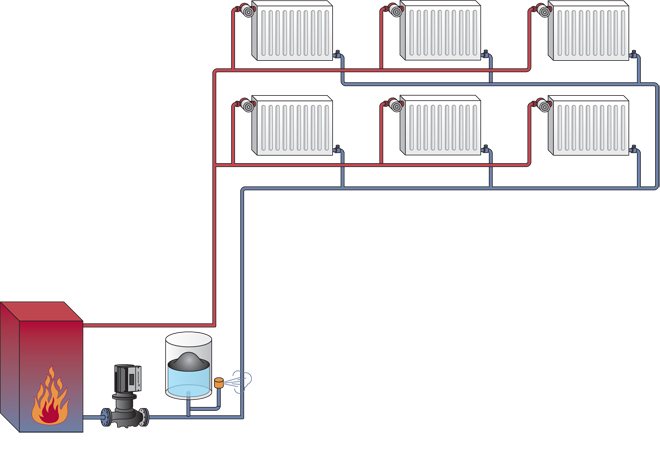

Given the characteristics presented, it will not be difficult to choose a suitable radiator for heating a private house.The main thing is to understand the features of various models of heaters, and also take into account their advantages and disadvantages.
We recommend that you familiarize yourself
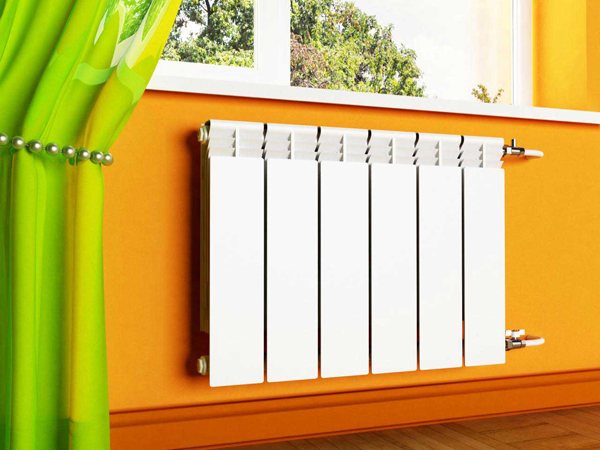

Which heating radiators are best for an apartment: an overview of popular models-2020
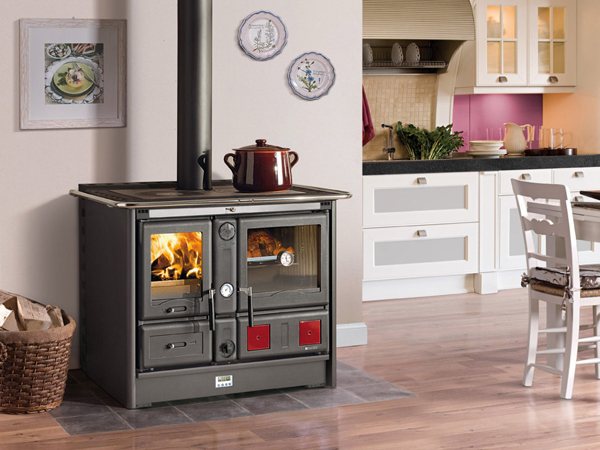

How to fold a stove with a water circuit yourself for heating a house
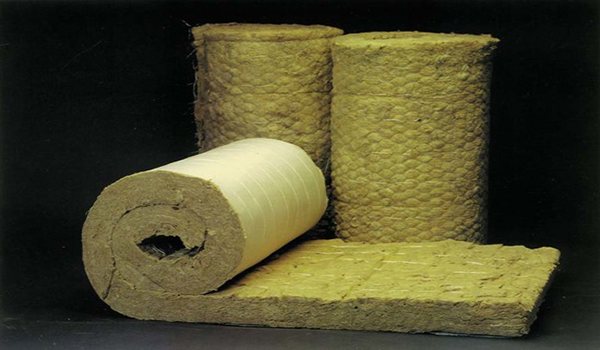

What is the best insulation for walls - a review of materials
Unusual battery types
A.
They are in the form of a cylinder. They are of the alkaline type. Voltage 1.5 volts. According to the IEC marking, they are called R23. Dimensions 17 x 50 mm. They used to be used in non-standard devices and old computers. At the moment, they are practically not found.
AAAA.
They are referred to as LR61. They are very miniature cylindrical alkaline batteries. Voltage 1.5 V. Dimensions 8.3 x 42.5 mm. Such long batteries are used in cameras, flashlights, powerful stylus, laser pointers, glucometers.
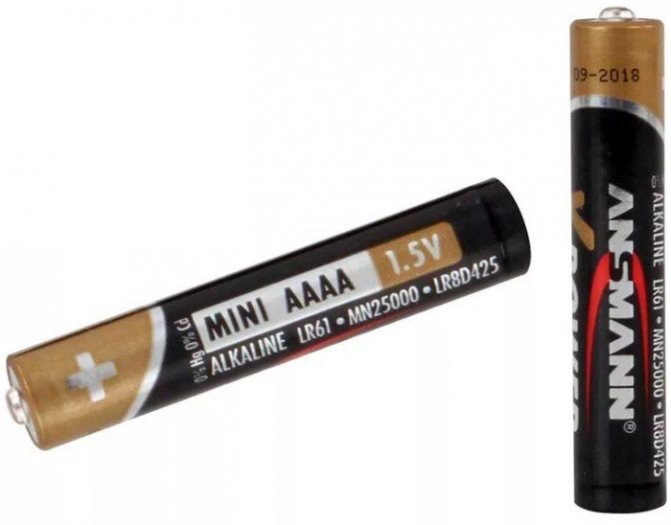

B.
They are saline and labeled as R12. There are also alkaline ones with the designation LR12. Made in the form of a cylindrical shape. Size 21.5x60 mm. Voltage 1.5 volts. Often used in lighting installations.
F.
They have a voltage of 1.5 V. They are referred to as L25 and LR25. Manufacturers produce salt cells with an energy capacity of 10.5 mAh and alkaline cells up to 26 mAh. Dimensions 33x91 mm.
N.
Marked as R1 and LR1. Capacity 400-1000mAh. Voltage 1.5 V. Dimensions 12x30.2 mm.
1 / 2AA.
They are designated CR14250. Type Li ‑ MnO2 (lithium manganese dioxide). Voltage 3.6 V. Li ‑ SOCl2 (Lithium Thionyl Chloride) are labeled ER14250. Parameters 14x25 mm.
R10.
Voltage 1.5 volts. Production started in the Soviet Union. They also have main markings as 332. Size 21 by 37 mm. At the moment, their production has been reduced.
There are similar batteries with 2 R10 cells inside. Such a power source is marked 2R10 and dimensions are 21.8x74.6 mm. Its voltage is 3 V. It is referred to as Duplex.
A23.
Has an increased voltage of 12 v. Its dimensions are 10.3x28.5 mm. It is alkaline in type. Marked as 8LR932 by IEC standard. When opened, usually 8 LR932 batteries are found connected one after the other. Most often used in remote controls and toys.
A27.
IEC standard - 8LR732. Alkaline type. Dimensions 8x28.2 mm. Voltage 12 V. Just like the previous one, it has a serial connection of eight LR632 batteries inside. Required for radio remotes, lighters, cigarettes powered by electricity.
3336.
It is IEC labeled 3LR12 and is of the alkaline type. And 3R12 is saline. People call them square because they have a rectangular shape. Similar power sources have been produced since 1901. Back then, they were only used in flashlights. After a while, they began to be used in radios, humidity sensors, toys and other devices. Their voltage is 4.5 volts. Energy capacity 1200 - 6100 mAh. Dimensions 67x62x22.
In fact, these are three R12 finger batteries connected in series.
At the moment, there are different types of batteries on sale. Therefore, you can easily find the right one for you! It is best to take time-tested batteries. Or you can purchase power sources from a well-known company.
Battery manufacturers
Batteries are created by different companies, both foreign and domestic. Each company strives to produce high quality batteries. After all, her reputation depends on it.
Domestic manufacturers of batteries in Russia
Below will be presented the main firms working in this direction.
- Space
- Energy
- Liotech
- Photon
- SSK
- Robiton
- Ergolux
- Trophy

